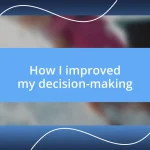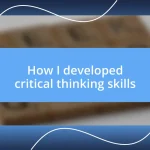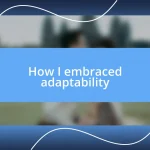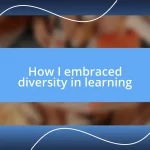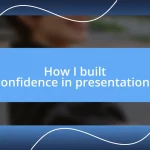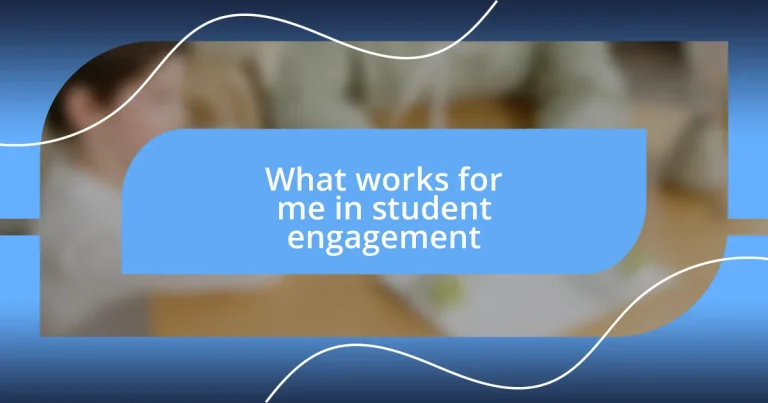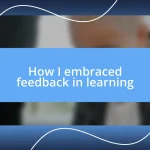Key takeaways:
- Implementing student choice and relevance in projects significantly enhances engagement and personal investment in learning.
- Active learning techniques, such as role-playing and collaborative projects, foster critical thinking, retention, and intrinsic motivation among students.
- Utilizing feedback from students promotes participation and trust, leading to a more dynamic and responsive classroom environment.
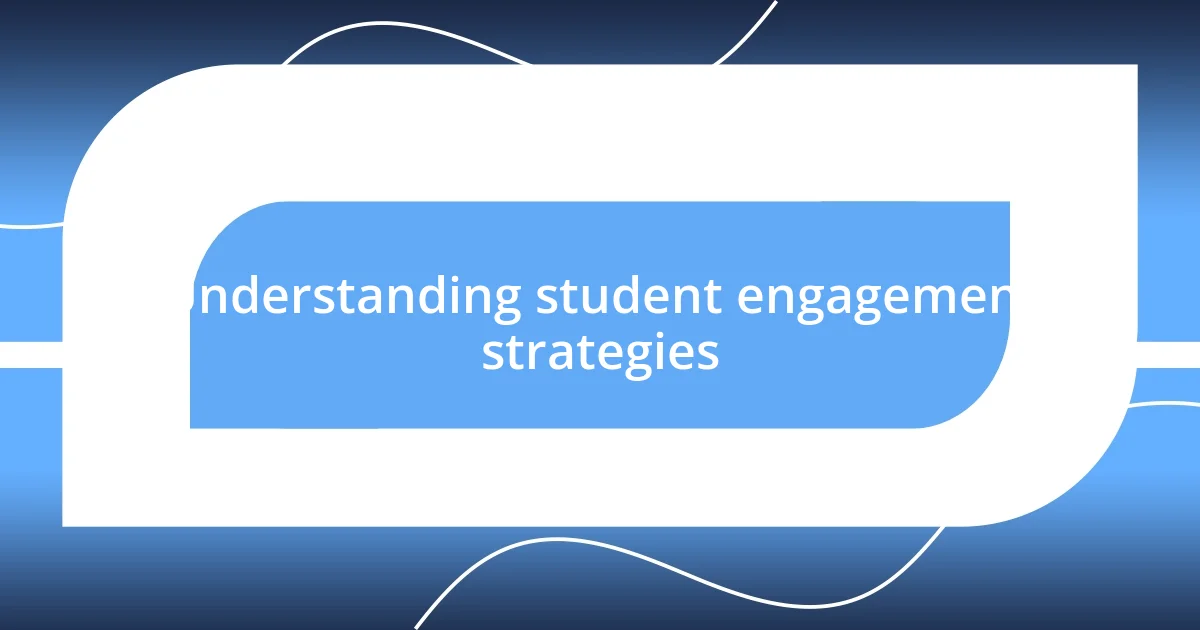
Understanding student engagement strategies
Student engagement strategies are more than just techniques; they represent a genuine attempt to connect with learners on a personal level. I remember a time when I introduced a project-based learning approach in my class, and the difference was palpable. Students came alive, eagerly collaborating and sharing ideas, proving that when they’re invested in the content, their engagement spikes.
What truly resonates in these strategies is the incorporation of choice and relevance. I once challenged my students to select topics they were passionate about for a presented assignment. The results were awe-inspiring—students poured their hearts into projects about everything from climate change to video game design. This raised a fundamental question: how can we better tap into our students’ interests to ignite their passion for learning?
Moreover, fostering a safe and inclusive environment is crucial. I’ve seen shy students bloom when encouraged to share their perspectives in a supportive classroom. It’s a reminder that when students feel valued and heard, their engagement flourishes. Isn’t it fascinating how a few simple adjustments in our approach can lead to profound changes in student involvement?
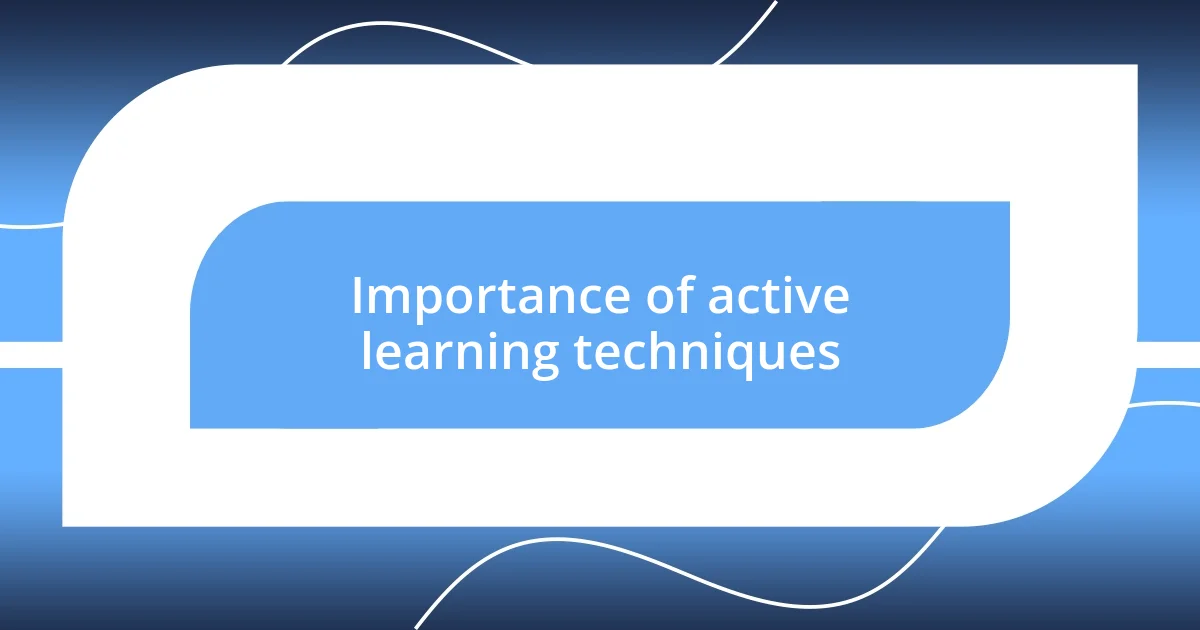
Importance of active learning techniques
Active learning techniques are vital in fostering deeper understanding and long-lasting retention of material. I recall implementing a role-playing exercise in a social studies lesson, where students assumed the identities of historical figures. The classroom buzzed with excitement, as they debated and collaborated, transforming a typically passive experience into an immersive adventure. This not only made learning memorable but also helped students to appreciate different perspectives and contexts.
Here are some key reasons why active learning is essential:
- Enhances Critical Thinking: By engaging with the material actively, students learn to analyze information critically and make connections, developing essential skills that go beyond rote memorization.
- Increases Retention: Active participation aids in memory formation. I’ve noticed that students can recall facts much better when they’ve discussed or enacted them.
- Fosters Collaboration: Group activities encourage students to work together, building teamwork skills that are vital in both academic and professional settings.
- Encourages Intrinsic Motivation: Active involvement shifts the focus from grades to personal growth and discovery, igniting a passion for learning that lasts beyond the classroom walls.
Engaging students through these techniques not only makes learning fun but profoundly impacts their educational journey.
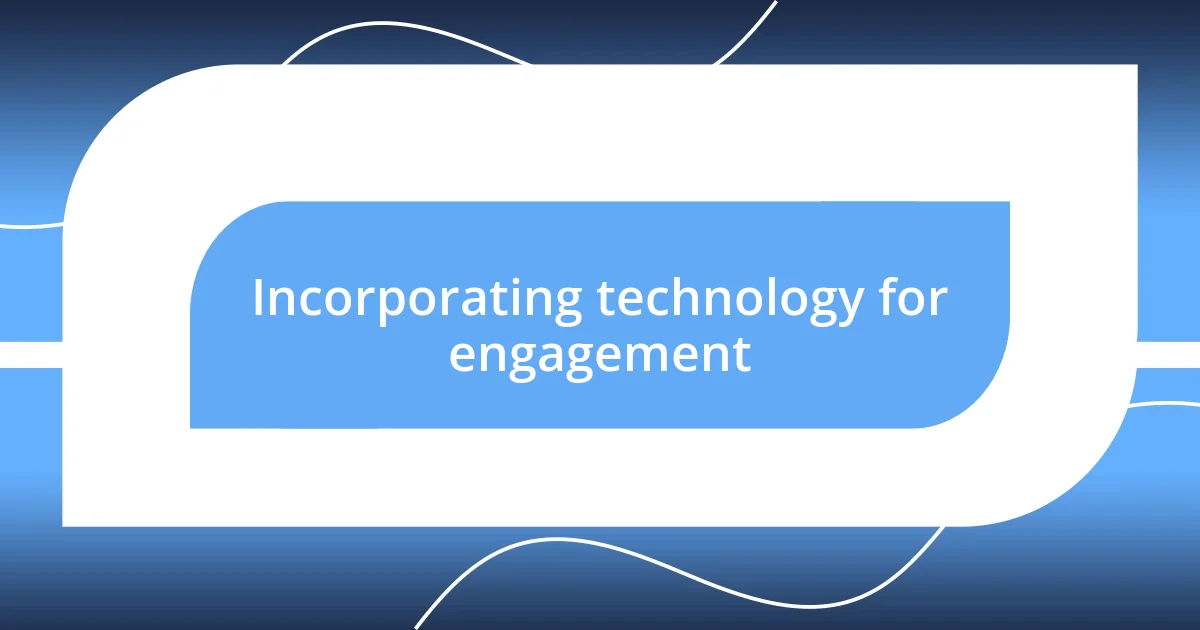
Incorporating technology for engagement
Incorporating technology in the classroom can revolutionize student engagement, turning a traditional learning environment into a dynamic space for interaction. I still remember the first time I tried using interactive polling software during a lesson. The students lit up, eagerly participating and sharing their opinions in real-time. It felt like I had unlocked a new dimension of engagement, where each voice counted, and the energy was contagious.
Another effective tool I’ve embraced is gamification. By integrating game elements into lessons, I’ve seen my students develop a fierce sense of competition and collaboration. I implemented a point system for completing tasks and, surprisingly, students began teaming up, sharing strategies, and motivating one another. This not only made learning fun but also created a community feel in the classroom that I hadn’t experienced before.
It’s fascinating how technology can facilitate personalized learning experiences. I started using adaptive learning platforms that cater to individual student needs. I observed students progress at their own pace, and it was a revelation to see those who often struggled excel when given the right support. This flexibility ultimately nurtured a sense of ownership in their learning journey.
| Technology Tool | Engagement Impact |
|---|---|
| Interactive Polling Software | Increases real-time student participation and gives every student a voice. |
| Gamification | Encourages competition and collaboration, boosting motivation and team spirit. |
| Adaptive Learning Platforms | Personalizes learning, allowing students to thrive at their own pace and take ownership of their education. |
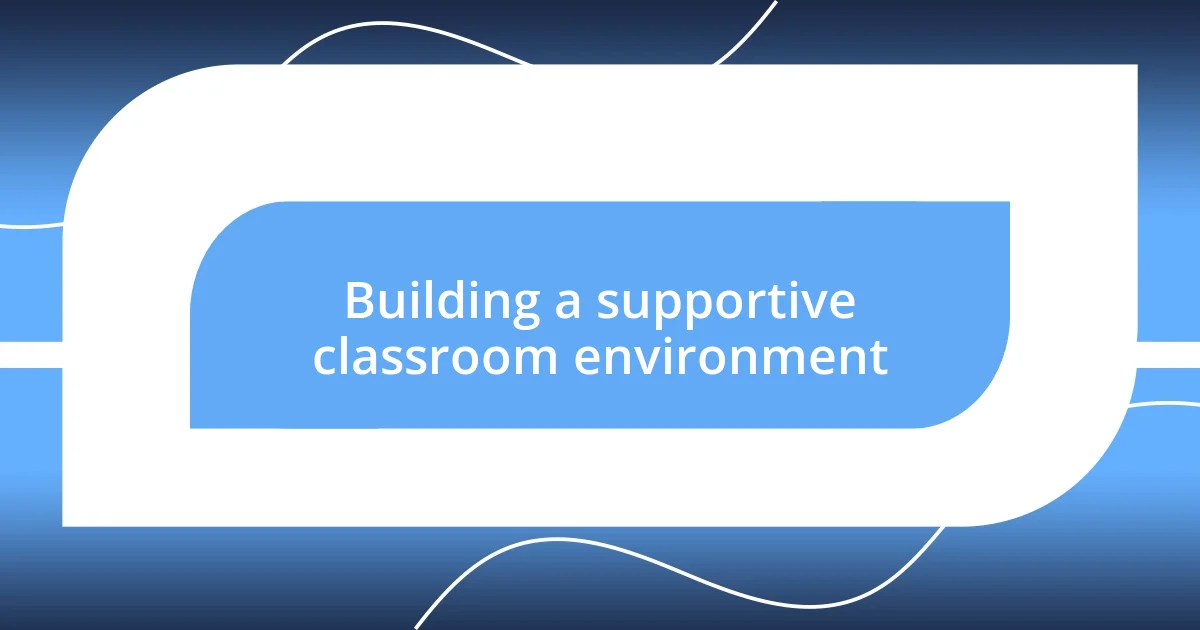
Building a supportive classroom environment
Creating a supportive classroom environment has been one of my most rewarding ventures as an educator. I remember a time when I intentionally designed my classroom layout to foster a sense of community. Instead of the traditional rows, I arranged the desks in clusters, allowing students to face one another. This simple change opened up pathways for communication and collaboration, and I witnessed the shyest students beginning to share their ideas. Isn’t it amazing how physical space can influence student interactions?
There’s something profoundly powerful about acknowledging each student’s unique strengths and challenges. I make it a point to celebrate small wins, whether it’s a student who aced a tough test or one who overcame personal hurdles. The joy in their eyes when recognized is priceless; it fosters a sense of belonging that spills over into their academic performance. Have you ever noticed how a little encouragement can spark an entire shift in a student’s attitude towards learning?
Equally important is establishing clear expectations and a culture of respect in the classroom. I often engage my students in creating our class agreements together, emphasizing what a positive learning space should look like. When they have a hand in this process, there’s a stronger commitment to upholding those values. This approach not only empowers them but also builds mutual respect, which I believe is the foundation for meaningful engagement. Don’t you think a classroom enriched with trust and open dialogue can make all the difference in a student’s educational experience?
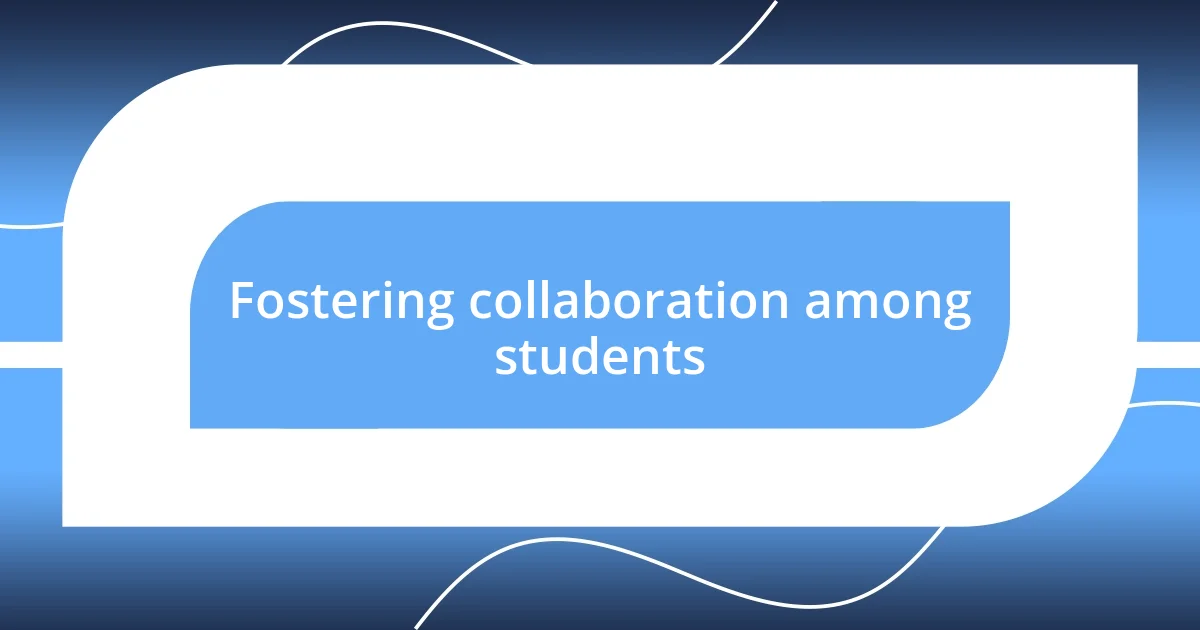
Fostering collaboration among students
One of the best strategies I’ve used to foster collaboration among students is assigning group projects that allow them to leverage each other’s strengths. I recall a particularly memorable science project where students had to build a model ecosystem. Watching them divide tasks according to their individual skills was like witnessing a well-oiled machine in action. Their excitement when they presented their work together was infectious—it truly underscored the power of collaboration in learning.
Another approach that yielded remarkable results was implementing peer mentorship. I paired up students from different grade levels, and the impact was profound. The younger students looked up to their mentors, while older students gained confidence by teaching. It created a vibrant atmosphere of mutual respect and learning that I hadn’t anticipated. Have you ever seen how a simple conversation can ignite a passion for learning? The sense of pride I saw in both groups was unforgettable.
Moreover, creating opportunities for students to share their perspectives in discussions has also been transformative. I regularly hold “talking circles” where everyone gets a chance to contribute. The first time I facilitated one, I was blown away by the insights students shared. They truly listened to each other, building on ideas and refining their thoughts in real-time. Isn’t it incredible how giving students a voice nurtures collaboration and deepens their understanding of the subject matter? These moments of connection really illustrate how collaborative frameworks can amplify learning.
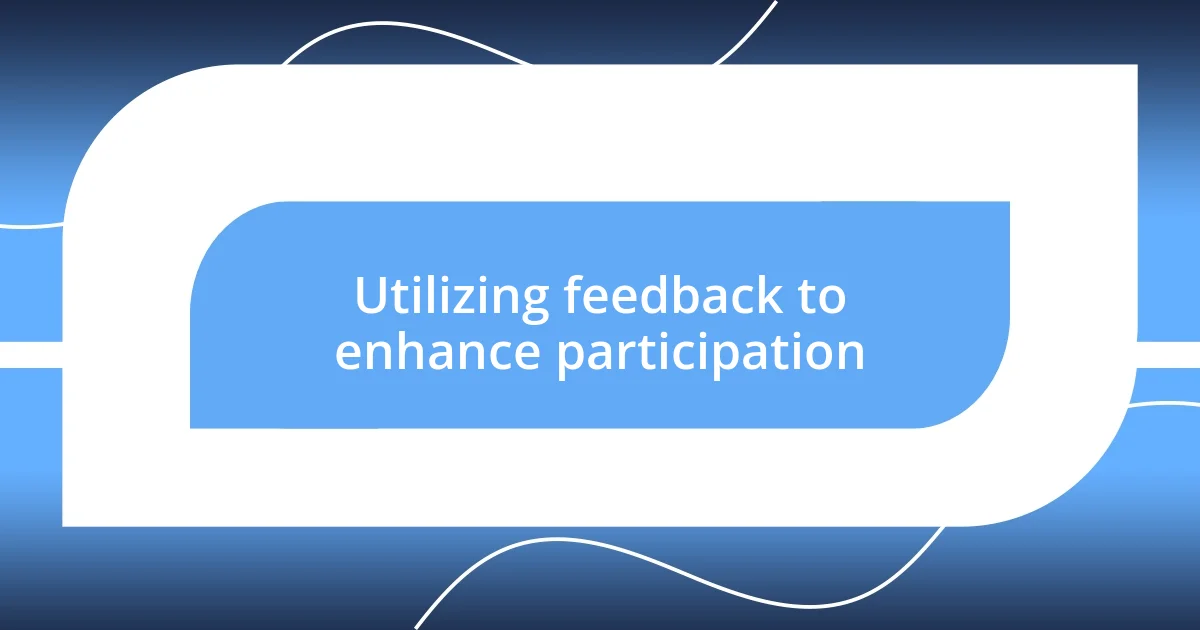
Utilizing feedback to enhance participation
Utilizing feedback is a game-changer in enhancing student participation. After each assignment, I make it a point to provide timely, specific feedback. I recall a time when a student who typically sat quietly in the back started to engage more after I highlighted their insight on a particular topic in my feedback. I remember their surprised smile as they realized their contributions mattered. Have you ever seen how a bit of recognition can draw someone out of their shell?
In addition, I’ve found that involving students in the feedback process can really ignite their participation. After lessons, I often ask students to evaluate our class activities anonymously. One day, I was surprised by the candid responses. They suggested more group work, which led me to incorporate more collaborative tasks. The result? Increased involvement and enthusiasm from the entire class. Doesn’t it make sense that when students feel their voices are heard, they want to actively participate?
Collecting feedback isn’t just about improving instruction; it’s also about building trust. By showing that I value their opinions, I noticed a remarkable shift in classroom dynamics. Students started to share their thoughts openly, not just during discussions but also in informal settings. One afternoon, a usually reserved student approached me after class with suggestions for a project. Their confidence was palpable! Isn’t it amazing how the simple act of encouraging feedback can transform a student’s willingness to engage?
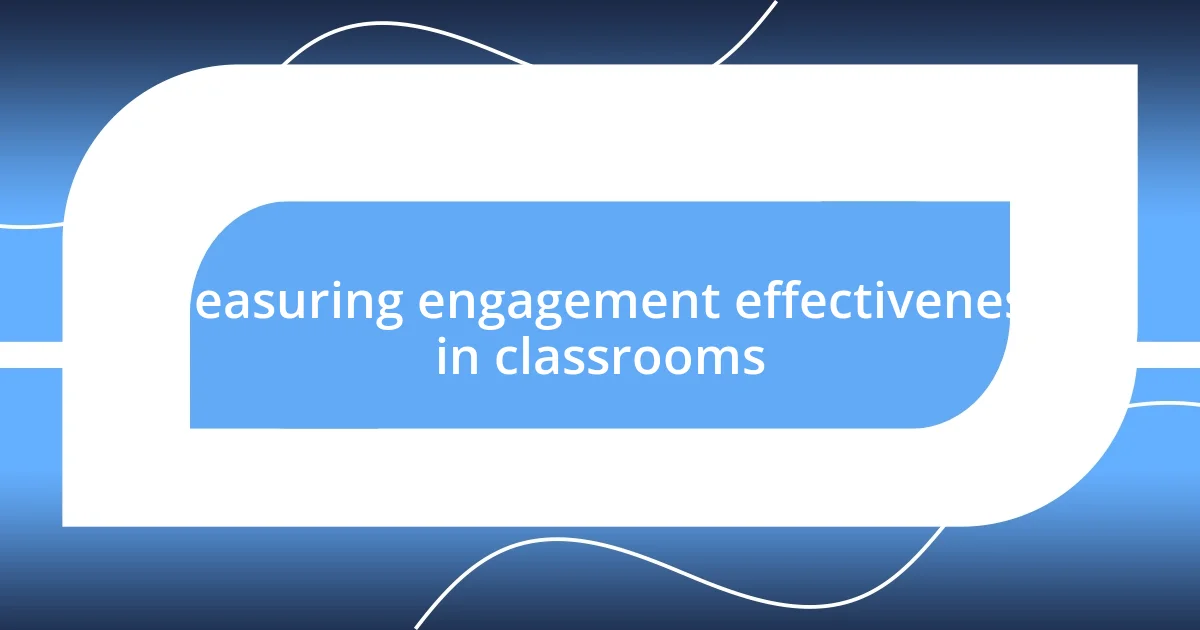
Measuring engagement effectiveness in classrooms
Measuring engagement effectiveness in classrooms is an ongoing process that can deeply influence teaching strategies. I often rely on both quantitative and qualitative data to gauge how engaged my students are. For instance, I use surveys and polls after lessons to capture students’ thoughts and feelings about the material. One time, I implemented a quick feedback poll at the end of a particularly challenging lesson, and the results surprised me. The majority of students felt lost, which motivated me to adapt my teaching methods immediately. Isn’t it enlightening how a simple survey can shine a light on student understanding?
Another practical approach I’ve adopted is observing student interactions during activities. While walking around the classroom, I pay attention to their body language and engagement levels. I once noticed a group of students animatedly discussing a topic while others were disengaged. This discrepancy highlighted a need for flexible grouping strategies, which I soon introduced. How often do we overlook those small moments that reveal a wealth of information about student engagement?
Additionally, analyzing students’ participation over time has shown me which methods resonate best with them. For example, I keep track of how many students contribute during discussions versus how often they retreat into silence. I recall a class where discussions initially felt one-sided, but after incorporating more hands-on activities, the conversations flourished. Isn’t it fascinating to observe how different approaches can transform the dynamics in a classroom? This kind of reflective practice keeps me connected to my students’ needs and ensures that I’m always evolving as an educator.
